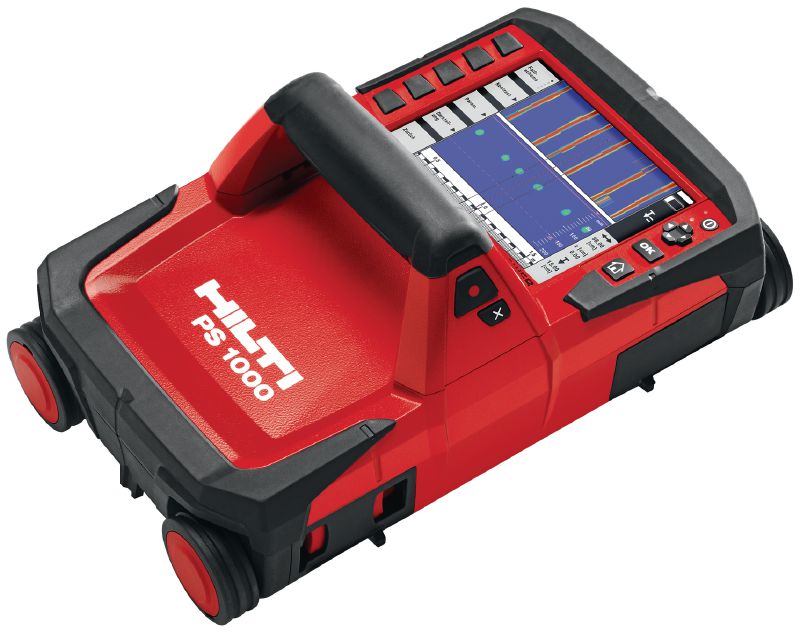Find RainierGPR Service Areas Near You for Specialist Concrete Scanning
Find RainierGPR Service Areas Near You for Specialist Concrete Scanning
Blog Article
Enhancing Task Planning and Implementation Through Advanced Concrete Scanning Methods
In the realm of job preparation and foresight, precision and execution are crucial aspects that can make the distinction between success and obstacles. Advanced concrete scanning strategies have emerged as an innovative device established to raise the requirements of project monitoring within the building and construction market. By using sophisticated technology, these techniques supply a glimpse into the structural stability of a building also before the very first block is laid. The effects of such advancements are extensive, assuring a paradigm shift in exactly how tasks are approached and delivered.
Benefits of Advanced Concrete Scanning Methods

Improved Precision in Job Analyses
Enhancing job analyses via advanced concrete scanning strategies dramatically boosts the accuracy and integrity of construction examinations. By using advanced scanning modern technologies such as ground-penetrating radar (GPR) and 3D imaging, project teams can currently obtain thorough insights right into the problem of concrete structures, determining potential flaws or weak points that may not show up to the naked eye. This boosted level of accuracy in task assessments enables building and construction experts to make more enlightened choices pertaining to repair service and upkeep methods, bring about improved general project end results.
Furthermore, the increased accuracy in task analyses achieved via advanced concrete scanning strategies assists in lessening the threat of unexpected problems during the building stage. By proactively identifying surprise anomalies within concrete structures, such as rebar rust or voids, job groups can deal with these concerns beforehand, avoiding expensive hold-ups and remodel later in the project lifecycle. Eventually, the improved accuracy in task analyses helped with by sophisticated concrete scanning strategies contributes to higher performance, cost-effectiveness, and top quality in building jobs.
Early Identification of Architectural Obstacles
Very early detection of architectural obstacles plays a vital role in guaranteeing the stability and security of concrete frameworks throughout the building procedure. Recognizing possible issues at a beginning enables prompt treatment, preventing pricey rework, timetable hold-ups, and safety and security hazards. Advanced concrete scanning strategies, such as ground-penetrating radar (GPR) and 3D imaging, make it possible for project groups to reveal concealed flaws, gaps, support design inconsistencies, and various other anomalies that could jeopardize the framework's security.
By implementing these methods throughout the planning and implementation stages, building experts can proactively attend to structural obstacles before they intensify into major problems. As an example, discovering insufficient concrete cover over support bars beforehand can prevent rust and architectural weakening in the future - RainierGPR Service Areas. Moreover, recognizing variants in concrete thickness or thickness can aid maximize material use and make sure consistent toughness buildings across the structure
Ultimately, early identification of structural challenges via advanced concrete scanning not only boosts the general high quality and sturdiness of the construction yet additionally contributes to a more secure developed environment for customers and passengers.
Boosted Precaution in Construction
The application of durable safety and security protocols is critical in the construction sector to reduce risks and secure the well-being of stakeholders and workers. To enhance security procedures, building companies are progressively embracing technical advancements such as wearable devices that monitor employees' crucial indications and detect potential wellness issues in real-time. By focusing on safety through the incorporation of sophisticated innovations and extensive training programs, building jobs can considerably lower mishaps and produce a protected functioning environment for all entailed.
Streamlining Task Administration Processes
To maximize operational effectiveness and make sure task success in the building and construction industry, a focus on improving project administration procedures is crucial. By executing effective task administration processes, construction click to read tasks can reduce delays, decrease expenses, and boost total performance.

Conclusion
Finally, the application of advanced concrete scanning strategies offers numerous advantages for project preparation and execution. These methods give better precision in task assessments, very early identification of architectural obstacles, boosted safety and security actions in building and construction, and structured task monitoring processes. Integrating these methods into project operations can inevitably cause much more effective and effective results in construction tasks.
Eventually, the boosted accuracy in task evaluations promoted by advanced concrete scanning strategies contributes to higher performance, cost-effectiveness, and quality in construction projects. RainierGPR Service Areas.
To enhance functional efficiency and ensure task success in the building sector, an emphasis on streamlining job administration processes is important. By applying efficient task management procedures, construction projects can decrease delays, decrease expenses, and boost total productivity. By enhancing task monitoring processes via modern technology combination, clear communication, and data-driven approaches, building and construction jobs can achieve greater efficiency, cost-effectiveness, and successful results.
These methods provide better accuracy in project assessments, very early recognition of structural obstacles, visit our website enhanced safety and security procedures in building and construction, and streamlined job management processes.
Report this page